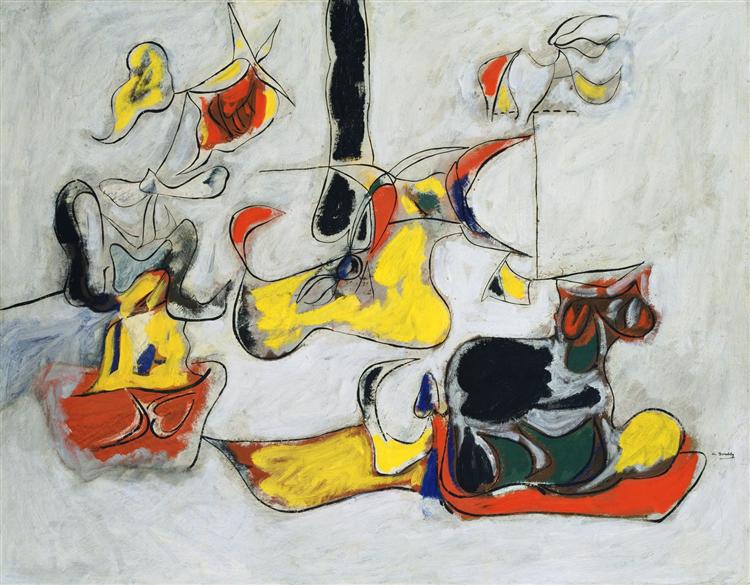Description
The painting "The Garden of Sochi" (1943) by Arshile Gorky is a fascinating example of the work of one of the precursors of abstract expressionism and surrealism in the United States. Gatchy, an artist of Armenian origin, channeled his personal experiences, his cultural heritage and his interest in European avant -garde in a work that, although radiant and vibrant, is impregnated with a background of melancholy.
In "The Garden of Sochi", Gorky combines his characteristic biomorphic style with a lyricism that evokes sensations of nostalgia and yearning. The composition is an explosion of organic forms, which seem to float and grow in a chaotic dance. This work does not present defined human figures, but abstract forms could be interpreted as symbolic representations of life and relationships. With its focus on nature and garden, Gorky establishes a space that feels both lush and intangible, remembering the fragility of existence.
The use of color is one of the most shocking aspects of this painting. Gorky uses a vibrant palette, in which lush green, warm roses and bright yellow predominate. These colors not only provide a sense of vitality and growth, but also evoke the heat and diversity of a garden in full flowering. This choice of colors, combined with the dynamic disposition of forms, suggests a life, death and rebirth cycle, a recurring theme in Gorky's work.
Gatchy's technique is characterized by the fusion of the sensitive and the abstract. Its ability to mix color spots with dense and fluid brush strokes is evident in "The Garden of Sochi", where the oil layers seem to flow one over another, creating an almost three -dimensional depth. This visual superposition can be interpreted as a reflection of the complexity of human emotions, which are often intertwined and overlap as the layers of their painting.
While "the Sochi garden" can be observed without explicit iconography, its cultural and personal context is essential for the understanding of the work. Gorky, who had experienced devastating losses throughout his life, such as the death of his mother and his own migration and uprooting, infuses each stroke with an emotional burden that exceeds mere representation. The work is at a time when Gorky began to explore more deep identity, memory and the process of artistic creation, which makes it a testimony not only of its evolution as an artist, but also of their personal struggle and Search for meaning.
Together, "The Sushi Garden" transcends the mere visual representation by opening a space for reflection on the nature of the life and role of the human being in it. It is a reminder that, through the beauty of art, we can confront and process experience and emotion, finding a connection between the internal and the external, between what has been experienced and the imagined. Gorky's work, rich in complexities, continues to resonate with the viewer, inviting a deeper consideration of the interaction between art, nature and human condition.
KUADROS ©, a famous paint on your wall.
Hand-made oil painting reproductions, with the quality of professional artists and the distinctive seal of KUADROS ©.
Art reproduction service with satisfaction guarantee. If you are not completely satisfied with the replica of your painting, we refund your money 100%.

